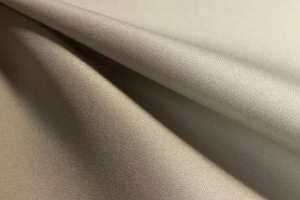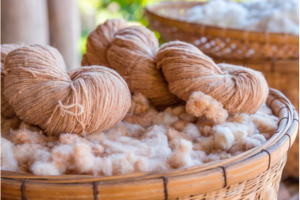The Latest Technologies in Sportswear Materials: Fabric Innovation

The Latest Technologies in Sportswear Materials: Fabric Innovation
The sportswear industry is constantly evolving, and one of the most important areas of innovation is in fabrics. Sportswear fabrics need to be moisture-wicking, breathable, and durable, so athletes can focus on their performance and not on how hot or sweaty they're getting.
In this blog post, we will discuss the latest technologies in sportswear fabrics, including sustainable fabrics, mesh fabric, compression fabric, neoprene fabric, and tech fabric. We will also discuss how to choose the right fabrics for your sportswear brand.
In recent years, there have been a number of new technologies developed in sportswear fabrics that offer even better performance and comfort. Here are five of the latest trends:
1. Sustainable fabrics
Sustainability is no longer a trend but a necessity in the fashion industry. Choosing sustainable fabrics like recycled polyester, organic cotton, and bamboo not only reduces environmental impact but also offers breathability, moisture-wicking, and durability. They offer the same performance and comfort as traditional fabrics, but they have a lower environmental impact. There are a number of sustainable fabrics available for sportswear, including:
Recycled polyester
Recycled polyester is made from plastic bottles that have been recycled. It's just as soft and comfortable as virgin polyester, but it's better for the environment. It takes about 7 recycled plastic bottles to make one recycled polyester garment.

Recycled Polyester Fabric
Organic cotton
Organic cotton is grown without the use of harmful chemicals, such as pesticides and herbicides. It's softer and more breathable than conventional cotton, and it's also better for your skin. It takes about 90% less water to grow organic cotton than conventional cotton.

Organic Cotton
Bamboo
Bamboo is a natural fiber that is incredibly soft and absorbent. It's also naturally moisture-wicking and odor-resistant. Bamboo is a fast-growing plant that doesn't require pesticides or herbicides. It also requires much less water to grow than cotton. Recycled polyester is made from plastic bottles that have been recycled. It's just as soft and comfortable as virgin polyester, but it's better for the environment.

Organic Bamboo
2. Mesh fabric
Mesh fabric is perfect for high-intensity workouts, as it allows air to circulate, keeping your customers cool and dry. It's also lightweight and flexible, making it a popular choice for running shorts and sports bras.
Mesh fabric is made from a variety of materials, including polyester, nylon, and spandex. Polyester is the most common material used for mesh fabric because it is durable and resists shrinking and fading. Nylon is also a popular choice because it is strong and flexible. Spandex is often added to mesh fabric to give it more stretch. It's often used in combination with other fabrics to create a more breathable and comfortable garment.
Here are some of the benefits of using mesh fabric in sportswear:
Moisture-wicking. Mesh fabric helps to keep the wearer cool and dry by wicking away sweat.
Breathable. Mesh fabric allows air to circulate freely, which helps to prevent overheating.
Lightweight. Mesh fabric is lightweight and comfortable to wear.
Flexible. Mesh fabric is flexible and allows for a full range of motion.
Durable. Mesh fabric is durable and can withstand the rigors of exercise.
3. Compression fabric
Compression fabric is designed to fit tightly, offering support and reducing muscle vibration during exercise. It promotes blood flow and enhances performance, making it a favorite among athletes and fitness enthusiasts.
Compression fabric is made from a variety of materials, including polyester, nylon, and spandex. It's often blended with other fibers to create a more comfortable and breathable fabric.
Here are some of the benefits of using compression fabric in sportswear:
Support. Compression fabric provides support to muscles and joints, which can help to prevent injuries.
Reduces muscle vibration. Compression fabric helps to reduce muscle vibration during exercise, which can help to improve performance.
Improves circulation. Compression fabric helps to improve circulation by squeezing the blood vessels. This can help to remove waste products from the muscles and deliver oxygen and nutrients.
Reduces fatigue. Compression fabric can help to reduce fatigue by improving circulation and reducing muscle vibration.
Comfortable. Compression fabric is designed to be comfortable to wear. It is often made from breathable materials that allow air to circulate.
4. Neoprene fabric
Neoprene fabric is a type of synthetic rubber that is made from chloroprene. It is often used in water-based sportswear because it is waterproof, quick-drying, and offers excellent insulation. This makes it ideal for cold water activities such as surfing, swimming, and scuba diving.
Neoprene fabric is also used in other applications, such as wetsuits, diving suits, and cold-weather gear. It is a durable fabric that can withstand the rigors of water sports and cold weather.
Here are some of the benefits of using neoprene fabric in sportswear:
Waterproof. Neoprene fabric is waterproof, which means that it will not let water in. This is important for keeping you dry in cold water activities.
Quick-drying. Neoprene fabric is quick-drying, which means that it will not stay wet for long. This is important for comfort and performance.
Insulation. Neoprene fabric is a good insulator, which means that it will help to keep you warm. This is important for cold water activities.
Durable. Neoprene fabric is a durable fabric that can withstand the rigors of water sports and cold weather.
Comfortable. Neoprene fabric can be comfortable to wear, even in cold water.
5. Tech fabric
Tech fabric is a type of fabric that is made from a blend of natural and synthetic fibers. It is often referred to as performance fabric or activewear fabric. Tech fabric is designed to offer superior performance and comfort for sports and other physical activities. It is moisture-wicking, breathable, and stretchy, making it a versatile option for a wide range of activities.
Tech fabric is often used in performance sportswear, such as running shoes and yoga pants. It is also becoming increasingly popular in everyday clothing, such as T-shirts and hoodies.
Here are some of the benefits of using tech fabric in sportswear:
Moisture-wicking. Tech fabric helps to keep the wearer cool and dry by wicking away sweat. This is important for preventing overheating and discomfort during physical activity.
Breathable. Tech fabric allows air to circulate, which helps to prevent overheating.
Stretchy. Tech fabric stretches and moves with the body, which allows for a full range of motion during physical activity.
Durable. Tech fabric is durable and can withstand the rigors of physical activity.
Comfortable. Tech fabric is designed to be comfortable to wear, even during long periods of physical activity.
In Conclusion
The right choice of fabric can make a big difference in the performance and comfort of your sportswear brand. The fabric you use should be moisture-wicking, breathable, and durable, so your customers can focus on their workout and not on how hot or sweaty they're getting.
The five fabrics discussed in this blog post are just a few of the many options available. When choosing fabrics for your sportswear brand, it is important to consider the needs of your target audience, the type of activities they will be using the garments for, and the budget.
By choosing the right fabrics, you can create sportswear that is comfortable, functional, and stylish. This will help you to attract and retain customers and build a successful sportswear brand.
Here are some additional tips for choosing fabrics for your sportswear brand:
Consider the needs of your target audience. What are their activities? What climate do they live in? What is their budget?
Research different fabrics and their properties. There are many different fabrics available, each with its own advantages and disadvantages.
Get samples of the fabrics you are considering. This will help you to see and feel the fabrics and decide if they are right for your brand.
Work with a fabric supplier who can help you choose the right fabrics for your needs. A good fabric supplier will be able to advise you on the best fabrics for your target audience, activities, and budget.
By following these tips, you can choose the right fabrics for your sportswear brand and create garments that your customers will love.
About FittDesign
FittDesign is a full-service design and production company specializing in the sportswear and activewear industry. We provide comprehensive solutions including innovative design, detailed technical packs, and high-quality manufacturing. Our expertise supports brands in creating functional and durable sportswear that meets the demands of a competitive market.
Ready to Bring Your Activewear Vision to Life?
Contact Us today and let’s get started on your project!
